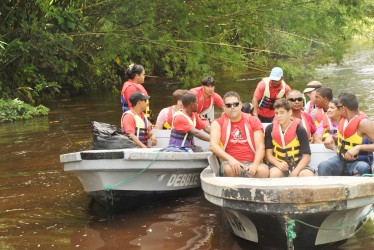As bilateral relations between Washington and Havana move inexorably closer to normalization, intra-regional discourse on the likely impact of closer ties between the once implacable foes on relations, and particularly economic ties between the United States and the English-speaking Caribbean is heating up in the region.

Much of the discourse is centred around the anticipated boom in tourist travel from the US to Cuba and the likely impact of this on the Caribbean Community’s North American tourism market.
Regional tourist destinations having contemplated the issue for months on end, the Barbados-based Caribbean Hotel and Tourism Association (CHTA) finally issued a White Paper towards the end of June articulating its thoughts on the subject.
Evidently concerned over the likely implications for the tourism-dependent Caricom countries of increased tourist traffic between the US and Havana, the White Paper is advocating the creation of a partnership with the US; a Caribbean Basin Tourism Initiative, modelled after the Caribbean Basin Initiative of almost four decades ago and designed to boost investment in tourism and travel to the English-speaking Caribbean.
The CHTA White Paper is careful not to display any animosity to the prospects of Cuba securing a bigger share of the US tourist market, but it nonetheless makes clear its concern that the further relaxation of travel to Cuba for Americans could be the biggest and most disruptive pebble to be dropped into the Caribbean pool in 50 years.
Even in the face of the travel restrictions between the two countries, Cuba has, over the years, been no slouch as far as tourist arrivals are concerned. Between January and May this year Cuba reportedly saw a 36 per cent increase in US visitors from the same period in 2014 plus a 14 per cent hike in visitors from elsewhere. The relaxation on travel restrictions almost certainly means that the numbers will continue to rise.

In the short term the effects are likely to be felt mostly by the bigger players in the English-speaking Caribbean’s tourism industry, chiefly the Bahamas, Jamaica and Barbados. In the fullness of time, however, the lesser players in the sector – including countries like Guyana – which are still seeking to get their tourism act together, might have to re-adjust their strategies altogether. Truth be told, while local tour operators rarely if ever fail to sound upbeat about Guyana’s nature tourism option, there has been failure over the years to invest in marketing Guyana overseas. The difficulties include attracting reputable international airlines to Guyana, a lack of adequate tourism infrastructure and a capital city that grows increasingly unattractive on account of chronic neglect. The weakness of the country’s tourism sector is reflected in the fact that visitor arrivals amount to no more than a few thousands annually (compared with hundreds of thousands in the cases of other English-speaking Caribbean territories) and even then those numbers include Guyanese residing abroad and returning home for reasons that range from business to bereavement.
Interestingly, the concerns of the CHTA, now that Cuba is on the threshold of becoming a major player in the North American tourism market has to do with the fact that not only Guyana but the rest of the region as well might have, over the years, underestimated the value of tourism. For far too long the Caribbean has taken tourism for granted according to the CHTA’s White Paper titled ‘Cuba: The Great Disruption for the Good of the Caribbean’. The document says that Caribbean governments have historically favoured primary products, principally agricultural ones, ahead of tourism as their main economic pursuits. Cuba, the document asserts, understands that the advantages of tourism are that apart from its role as a foreign exchange earner it also creates employment across several sectors, establishes linkages throughout the economy, places minimal pressures on natural resources and can be sustainable over long periods.
To its credit, the CHTA’s white paper is surprisingly upbeat about the opportunities that could accrue to the wider Caribbean from tourism links between the USA and Cuba. The paper points that anticipated increase of US visitors to Cuba could trigger an enhanced sense of urgency in the region’s public and private sector, including here in Guyana, to either take action to improve their global competitiveness or face negative economic and social consequences.
CHTA President Emil Lee is quoted as saying that the regional body “wants to be clear that the CHTA welcomes the lifting of the US travel embargo and Cuba participating with the rest of the Caribbean as a tourism partner. This would eliminate a significant barrier to improving regional cooperation and integration.” Lee says, “Cuba should not be a point of fear for the region, rather it should be a rallying point for opportunity. Failure to act will result in a diversion of Americans and travellers curious to experience Cuba before it changes, many who would otherwise go elsewhere in the Caribbean.”
This of course, is easier said than done. While, for example, Guyana continues to face challenges attracting reputable airlines, Lee himself points out that “Cuba is already well established as a destination for many direct long-haul flights.” Accordingly, while Havana’s “potential to be a regional air hub” could benefit the region, faced with a choice between an underdeveloped tourism sector and Cuba that could shortly be open once again to tourists from North America and Europe after more than half a century the region could lose out considerably, Guyana, perhaps, more so than other territories.
In the case of Guyana and perhaps fortuitously the prospects for increased visitor arrivals in Cuba from the US and Europe coincides with the appointment by the new political administration of a minister responsible for tourism who has an opportunity to push for a strategic shift in official tourism policy. Over time there has been far too much leaden-footedness on tourism policy so that we have lagged behind on issues like the elimination of visa requirements and the adjustment of visa regulations that affect wedding tourism, for example. High air travel related taxes and fees and the acceleration of airport processing time are also issues that will have to be addressed if Guyana’s tourism sector is not to slip even further behind.
The CHTA is nothing if not candid in asserting that “relatively little effort has been spent on turning the most tourism dependent region in the world into the most tourism competent,” an assertion that may well apply in greater measure to Guyana than to most other countries. Accordingly, the white paper asserts that what it describes as “the coming Cuban disruption” may well be “the tonic that the countries need individually and collectively to build the kind of strategic approaches to tourism development that will yield sustainable results for its citizens.”
All of this was scheduled for discussion at last week’s Caricom summit in Barbados though the real issue is whether a region known for its sloth in addressing issues of concern will demonstrate a greater sense of urgency this time around.




